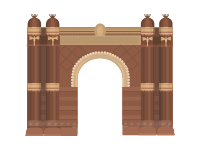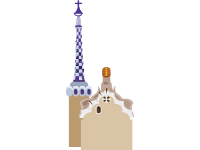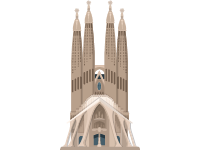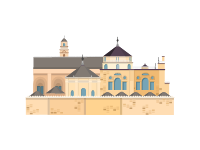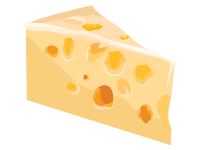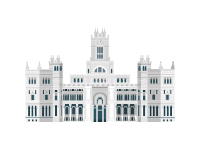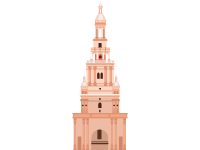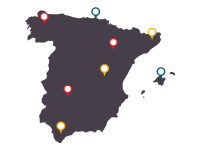As an inseparable part of the Alhambra and Generalife palaces and enclosures, the gardens and cultivated spaces, elements of adornment, perfection, symbolism, follow each other in every corner of the monument, providing a transcendent component, in the territory and in time, to the landscape of this place.
The trace that the passage of the centuries has left in the Red Hill has multiplied and enriched the variety of the gardens with diverse forms and gardener tastes, at the same time a reflection of epochs and different sensibilities.
The medieval gardens, created in the Nasrid stage, are the ones with the greatest fame and importance, due to their remote origin, the refined character with which they integrate the vegetation, the water and the buildings that frame them, and because of the close relationship they awoke in their conception with the desired Quranic paradise. Thus the Alhambra has medieval gardens (Patio Arrayanes, Lions and Patio de la Acequia), Renaissance XVI – XVII (patios of the Reja or Lindaraja, modified this one in the 19th century), from the 17th century (Garden of the Adarves, in the Alcazaba), 19th century (from the XIX High Gardens of the Generalife) and Contemporary Gardens of the 20th century (Jardines del Partal and Nuevos del Generalife) or even 21st century (Theater environment).
Among those used in medieval times, showy flower plants acquire a special and habitual presence in the Hispanic-Islamic gardens, many of them also fragrant, such as roses (Rosa sp.), Carnations (Dianthussp.), Violets (Viola odorata ), wallflower (Erysimumcheiri and Mathiolaincana), lilies (Iris germanica), oleanders (Neriumoleander) or water lilies (Nymphaea alba).
Other plants lacking flowers were selected exclusively for their aroma, such as basil (Ocimumbasilicum), oregano (Origanumsp.), Melissa (Melissa officinalis), mints (Menthasp.), Thyme (Thymussp.), Rosemary ( Rosmarinusofficinalis) or lavender (Lavandulasp.). Among them, jasmine (Jasminumsp.), Citrus fruits (Citrus sp.), or cypresses (Cupressussempervirens) played a leading role in the medieval Islamic gardening tradition.
The vegetation of the Monument has been modified over the centuries, not only in terms of the number and variety of species, but also in terms of cultivation and maintenance techniques and styles. To the traditionally used species in the Nasrid era, such as wallflower, lily, jasmine, cypress, bitter orange or lily; many others from different regions and continents have been incorporated and are now considered fully rooted in Granada’s gardening, such as boxwood, macassar, geranium, aspidistra, wisteria or pitimini rose.
Among all of them, if any species could represent these gardens, the myrtle would be the chosen one without a doubt. This shrub, considered in the Arab world as a plant with “báraka” (with blessing, hidden and invisible), of dense and fragrant foliage, used as an isolated specimen and trimmed in hedges, has been used at all times and in almost all Alhambra gardens. The name comes from the Arabic al-rayhan, “the aromatic one”, due to the smell that its leaves give off when rubbed, due to its fine texture, its relatively rapid growth, its delicate and scented whitish flowers, and its ability to accept pruning for the formation of hedges and other topiary forms (the art of the Topiaria is a gardening practice that consists of giving artistic forms to the plants by trimming with pruning shears).
